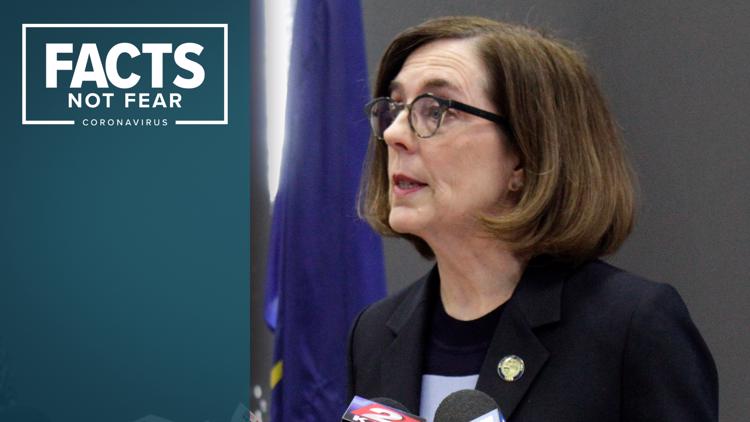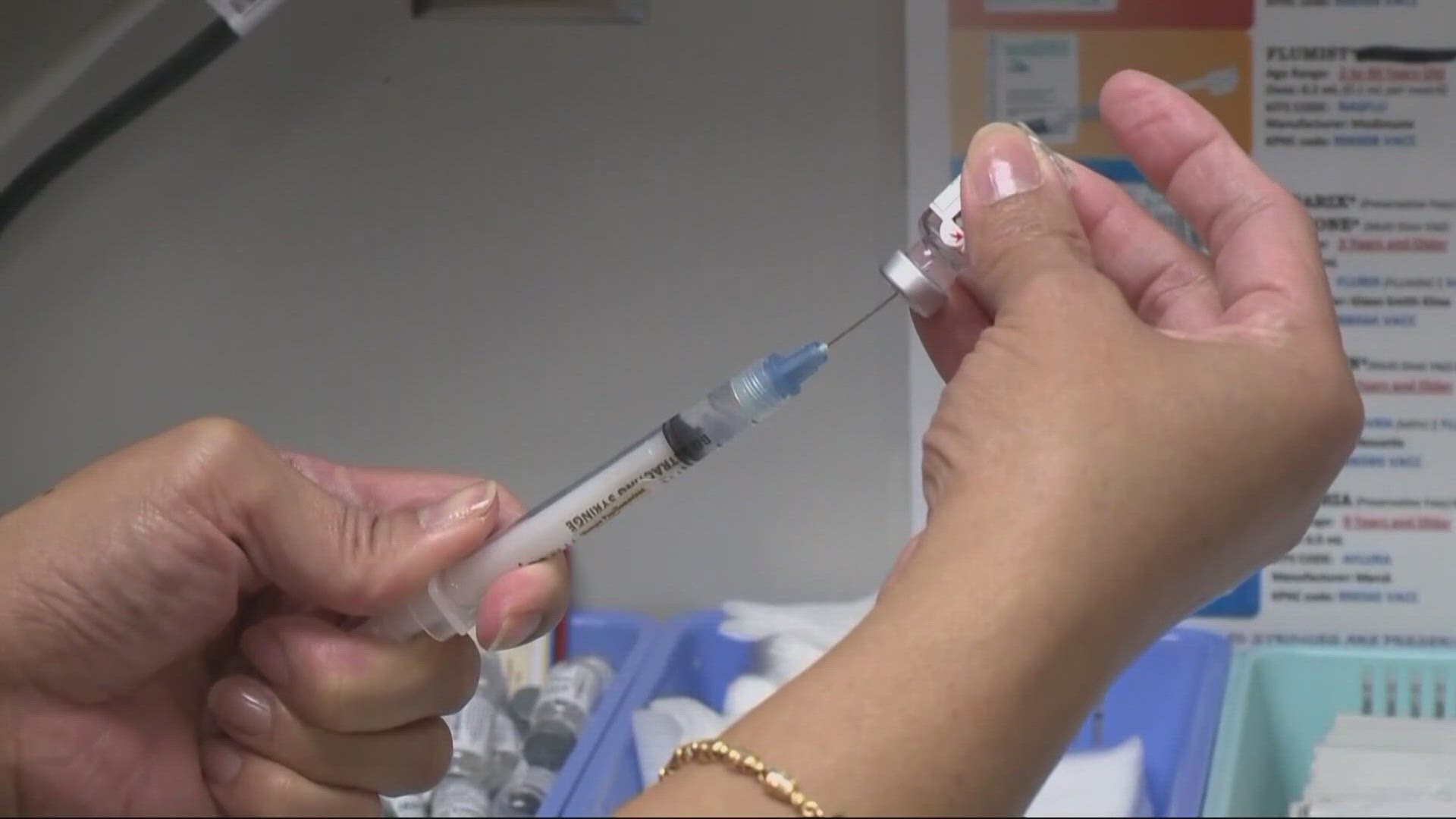PORTLAND, Oregon — Oregon will get only half the 20,000 coronavirus tests that Gov. Kate Brown promised from a private commercial lab and state health officials have no plans to put those tests to immediate use identifying infected residents.
New details of the state’s deal with Quest Diagnostics show Brown and her top political aide provided misleading information to the public last month about the tests, according to records obtained by The Oregonian/OregonLive.
Brown on March 18 said increasing testing capacity was one of her top priorities before announcing: “The Oregon Health Authority has signed an initial contract for 20,000 tests with one of the private providers.”
In reality, the state didn’t sign the Quest contract until two weeks later on April 1. And when the ink dried, Oregon’s allotment with the private lab was for just 10,000 tests.
And in perhaps the most surprising twist, state officials said Tuesday they will keep those tests in reserve for a possible surge – not to test Oregonians right now.
The inaccurate information initially released by Brown and her chief of staff, Nik Blosser, came during a politically fraught time. Frustrated Oregonians were questioning why the state had completed so few tests at its public health lab while officials provided shifting timelines for when wider testing would be available through private or hospital labs amid a national shortage.
Brown hastily announced a deal that wasn’t finalized and trumpeted an eye-popping number of tests that didn’t prove to be accurate. When pressed by The Oregonian/OregonLive in the days after the announcement, Blosser walked back his statement that an initial batch of 5,000 tests would be available from Quest “any day now.” He said he didn’t understand testing nuances and blamed inadequate test kit supplies from the federal government.
The full scope of inaccuracies became clear only this week when the newsroom obtained a copy of the state’s agreement with Quest through a public records request.
Blosser, as he did the first time, took the blame for the governor’s rushed announcement of the Quest deal and the exaggerations. He apologized and said the governor’s office did not intend to misinform Oregonians.
“Twenty-thousand is a lot,” he said in an interview. “And that’s why we were so excited. We thought we had a big increase there, and we clearly made a mistake about it.”
That excitement no longer appears to exist.
The Oregon Health Authority has not tapped its contract with Quest, spokesman Robb Cowie said. And it’s not clear when public officials plan to use those tests.
The agreement with Quest calls for Oregon to pay up to $690,000, or $69 per test. Quest is supposed to ship test kits and specimen collection containers to Oregon. But Cowie said he does not think health officials have even asked for those to be delivered.
“They feel like the lab has that capacity,” he said of the Oregon State Public Health Laboratory, “and this is backstop capacity for the lab.”
State officials now will consider using Quest in the event of outbreaks at places such as a prison, care facility or among health care workers, Cowie said, or save the tests for use in targeted situations once social distancing is relaxed.
“We continue to be cognizant that we may face a surge statewide, that we may face large outbreaks in specific areas,” Cowie said. “Right now we’re conserving this capacity to respond if those situations arise.”
Blosser said he wasn’t aware of Cowie’s statements and declined to comment.
Insufficient testing has suppressed the total number of identified coronavirus infections in Oregon and nationwide. Oregon’s tally now stands at nearly 1,200 known infections out of about 400,000 in America.
The health authority’s decision to keep Quest in reserve shifts more of the testing burden to hospitals and private labs under contract with doctors’ offices. Through Tuesday, more than 23,000 Oregonians had been tested for coronavirus, with less than 3,000 of those having specimens analyzed at the state’s public health lab.
Testing is still not open to the general public and remains still largely limited to people who are sick enough to be tested, at the discretion of doctors or hospital systems.
Brown acknowledged the importance of more testing when she announced the deal with Quest, although she emphasized that even with additional capacity not everyone would be eligible. At the time, private testing was in its infancy and fewer than 1,600 Oregonians had been screened since state’s first confirmed infection Feb. 28.
“Increasing Oregon’s testing capacity is one my top priorities,” the governor said. “It’s critical for us to increase our capacity so that we can fully assess the spread of COVID-19 in Oregon.”
Cowie later said Quest’s 20,000 tests would mean roughly 20,000 Oregonians could be screened for coronavirus.
Following Brown’s announcement, The Oregonian/OregonLive tried to find the agreement with Quest in the state’s online contracting database. It wasn’t there.
The newsroom then filed a public records request for the document March 24. The health authority did not provide its five-page agreement until Monday.
State officials could not explain why the contract reduced the tests to 10,000.
Blosser said he spoke to a vice president at Quest the weekend before Brown’s announcement hoping to access coronavirus testing and told the health authority about his conversation.
Blosser said he later learned the health authority had an existing agreement with Quest for unrelated diagnostic testing and state officials thought they could tap it to order 20,000 coronavirus tests, using existing spending authority.
But that didn’t happen. Neither Blosser nor Cowie could say why.
Then, when the new agreement was written, it called for only 10,000 tests.
Why?
“I actually don’t know the answer to that,” said Blosser, who referred a reporter to the health authority. “My assumption is that Quest is saying, well, here’s 10,000 that we can give you now.”
Cowie said he also did not know why the contract included only 10,000.
Either way, Blosser acknowledged providing an incomplete picture when he and Brown originally touted the deal last month.
“I will grant that a reasonable person – including me, frankly – would assume that when we say we think we’ve got 20,000 tests, that that’s in a meaningful period of time that’s going to actually do some good,” he said, noting an expectation of several weeks.
Blosser said the governor’s office was working to provide testing information in real time during an unprecedented pandemic.
“We frankly were probably being too open with the information until we really verified it and knew about it,” he said.
State officials will be more disciplined and “triple check” information going forward, Blosser said.
“We made a mistake,” he said. “We’re being extra careful now.”
This article was originally published by the Oregonian/OregonLive, one of more than a dozen news organizations throughout the state sharing their coverage of the novel coronavirus outbreak to help inform Oregonians about this evolving health issue.



